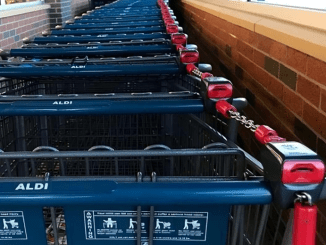
Assortment
Tweed River Regional Museum, Murwillumbah, Australia.
Item Title
Butter Churn and Pat.
Object Description
Butter churn
Glass jar with steel screw top lid. A wooden manage on prime of the lid functions a cog wheel and a scaled-down cog and pinion nut, which alongside one another transform a metal rod projecting down into the jar. Metal flanges attached to the rod rotate when the tackle is turned, mixing the contents of the jar. In lousy ailment, the cog wheels and metallic flanges are incredibly rusty. Dimensions: height 136.5 mm, width 145 mm, depth 560 mm.

Butter Pat
Wooden butter pat with a rounded handle flowing to a rectangular formed spatula. The spatula is rounded on the higher aspect and flat on the underside, the performing surface area. This floor has four radial strains incised in it. The spatula is wedge formed in cross segment, tapering to a slim edge. Proportions: height 84 mm, width 230 mm, depth 10 mm.
This butter churn and butter pat are a range of the dairy marketplace products in the assortment of Tweed River Regional Museum. The dairy industry in New South Wales experienced its origins in the Kiama district, south of Sydney, all through the 1860s and 1870s. By the 1890s most of the great farming land in the Illawarra was taken up and lots of settlers from the south moved to the north coast, encouraged by reviews of the warm climate and very good farming land which yielded constantly large milk output and fantastic costs. These farmers contributed their abilities and encounter to the growth of the dairy field on the north coastline, and also their belief in the co-operative movement. The Government, business in the belief that closer settlement was the key to progress, unveiled Crown land for agricultural purposes and encouraged settlers to crystal clear the indigenous forests and sow pasture for dairy cows.
The Butter Churn and Pat have historic importance mainly because of their affiliation with the lots of migrants who contributed their competencies and encounter to the enhancement of the dairy sector on the north coastline. They are evidence of the labour intensive nature of early dairying and butter creating and the impact that technological developments these as the cream separator and butter churn and advancements in rail and highway transportation experienced on the market.
These dairying things also have intangible significance representing the guide labour of the migrant households who worked in the dairy sector in northern New South Wales. They show the domestic operate of women in particular, as they had been normally liable for creating butter.


